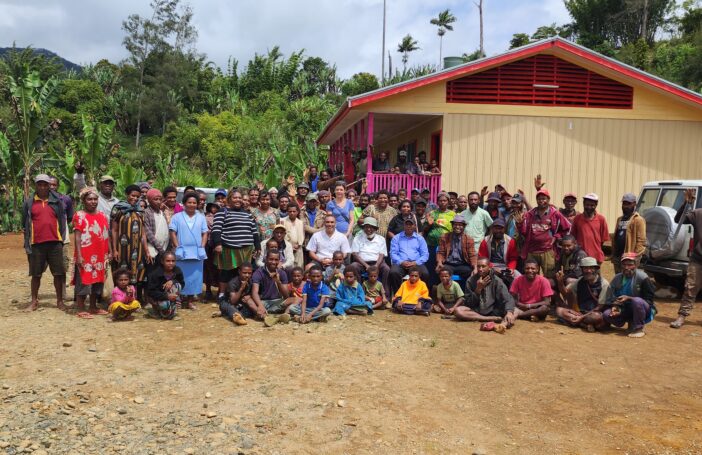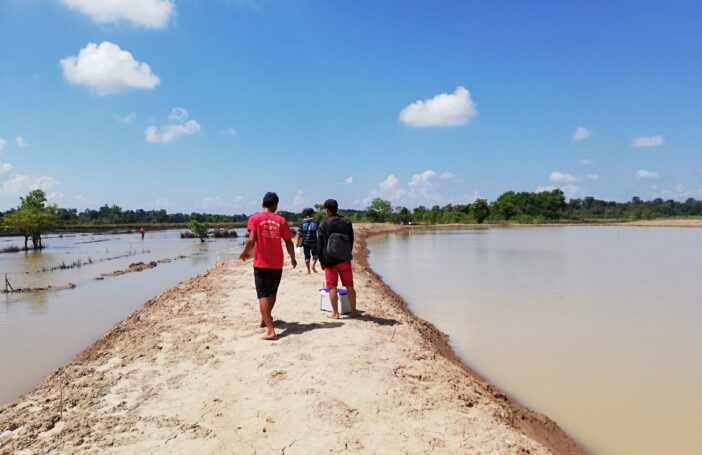This post originally appeared on Humanosphere and was cross-posted with the author’s permission.
You’ve got to admit that there’s a certain level of irony in the lack of any kind of systematic, evidence-based study of humanitarian workers. It’s ironic in two different ways.
First, there’s probably no other industry that puts more emphasis—at least at the level of professional discourse—on understanding culture, host communities, specific demographic groups, and so on, than the global community of humanitarian aid and development practitioners.
We’re kind of obsessed with context, culture, community, and finding ways to shape interventions which make sense and are effective. We agonize for weeks or maybe months over how to introduce birth-spacing in rural Afghanistan, say, or how to get people to cook differently in the Sahel. As we should. It is fully the aid community’s doctrine that “we shall respect culture and custom.”
But doesn’t it strike you as a bit odd that we don’t spend much time trying to understand aid and development workers (including those who sit in offices around the world, doing the unsexy work of making the spreadsheet cells calculate properly, or getting the report into the proper format)? They’re an important—a crucial, even—ingredient in the overall aid formula.
Without them, aid work doesn’t get done. Wouldn’t it be useful to know what makes them tick?
Secondly, donors to the humanitarian enterprise collectively part with tens of billions of dollars every year, ostensibly toward making the world better. Except in rare and specific instances, their donations do not go directly to end users, “beneficiaries”, if you will. No, the vast majority of charitable donations for humanitarian aid and development go through organizations, who, in turn, employ a global workforce of between 300,000 to 400,000.
Yet we don’t know who they are. Not really. And in a context (at least in North America) where we want to know the details of, and form strident opinions about, the personal lives of musicians and fashion models, doesn’t it seem—well, strange—that we’re okay not really knowing these people whose day job is literally spending our money to make the world better?
I don’t think that’s okay. So I am working with Thomas Arcaro, professor of sociology at Elon University, to answer a deceptively simple question: Who are the aid and development workers of the world?
The study begins with a first step—an online survey, open to anyone in the aid industry who cares to invest the 25 minutes, or so, that it takes to complete (depending on how long one agonizes over the open-ended questions).
How will the data be used? What is the end product? The researchers hope the data will lead to better understanding of the diverse, global, and largely unstudied workforce. Here’s my answer to some of these questions:
“There are probably three areas of immediate relevance. Staff care—what are the aid worker’s issues? Recruitment—once we understand better who’s in the industry now, we have a much better sense for how to find and recruit the next generation. And basic capacity-building—Again, once we have a better sense for who’s here, we can fine-tune whatever it is we currently do to improve the skills and impact of our current work force. …And among the implications of just those three things alone, would be, ultimately, and increase in aid effectiveness. Once you understand the workforce, you can take action to improve the workplace, put in place measures that enhance productivity… We’re talking, eventually, about policy-level impacts.”
Beyond that, although it’s hard to say for certain, it seems likely that there will be unknown benefits. Things that come up which were totally unexpected. Myths debunked, or maybe, finally confirmed. According to Dr. Arcaro:
“We know too much in popular culture about the bare surface of the humanitarian aid world; only vague caricatures and romanticized visions of “do-gooders” saving the world’s marginalized. We know too little about the flesh and blood folks that populate this world and the issues, personal and professional, which they face.”
If you work in aid, please take the survey here. You can also follow the accompanying blog (“Aid Worker Voices”), where Dr. Arcaro and I will share updates on the progress of the project and brief vignettes of learning in-progress.
J. is an anonymous aid worker who tweets at @TalesFromthHood.





This survey may result in some interesting insights and results, but to draw conclusions from such a survey about aid workers in general would be totally unsound. Given that aid workers choose to work in this industry not just for some noble humanitarian purpose, but also for purely selfish reasons- such as getting a foot-hold in the Third World; then with the experience under the belt, working for some regional or international organisation at some massive tax-free salary not available to them in the metropolitan labor markets. Which of the latter group of aid workers are likely to respond honestly to your survey? If your objective is to obtain solid information that can be generalized to the aid industry, perhaps the researchers should do the difficult slog of getting a good representative sample of the aid industries (countries) they want to learn about, and do a survey of a truly random sample of workers (at different levels) in these selected industries. The results might then be worth reading.
Is the survey for all aid and development workers, or just those involved in humanitarian work? The questions imply the latter.
Sounds like an interesting project will look forward to seeing what eventuates. You might like to link up with Prof Veronica Taylor at ANU (REGnet) who has been doing some similar work with a particular focus on people who work on law and justice within the Australian aid programme.